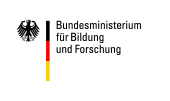Artificial Intelligence and Machine Learning for Connected Systems
The main goal of this course is to cover the basic concepts related to machine learning projects and present the main ML models and algorithms and how to apply them to connected systems.
The Description of the module you find here.
The course alternates between theoretical lectures and lab sessions. The main idea consists of presenting the theoretical background of a specific subject, followed by a lab session in which students will learn more details about each model and algorithm with practical examples using the most popular tools and libraries available. The course includes hands-on lab sessions with practical assignments, some of which are evaluated. The course is connected-systems oriented, which means that, in addition to the most popular datasets, like MNIST and California houses, students will also see other examples of network-related datasets.
Topics:
- Introduction to AIML.
- Practical skills and Linear Regression.
Lab: end-to-end work, exploratory data analysis. - Supervised Learning and Classification (Decision Trees and Random Forest, Bayesian Detection, Non-Parametric Classifiers)
Lab: Classification, Linear and Quadratic Discriminants, K-nearest neighbors (KNN). - Dimensionality Reduction
Lab: Principal Component Analysis (PCA), Multiple Discriminant Analysis (MDA) - Unsupervised Learning
Lab: Clustering - Artificial Neural Networks, Deep Neural Networks (DNN)
Lab: Neural Networks, Multi-Layer Perceptron (MLP) - Training enhancement techniques (e.g. Ensembles, in DNN)
Complementary content:
- Basics on Reinforcement Learning
Lab: Basics of Reinforcement Learning - Data processing tools (e.g. TensorFlow, Scikit learning)
Lab: management of time-series in Recurrent Neural Networks (RNN)
Lab tools
- Language: Python
- Frameworks and libraries: Numpy, Pandas, Matplotlib, Scikit-Learn, Tensor Flow, Keras, Google Colab, LATEX, and Overleaf
Datasets
- Iris
- Ridership: Bus and Rail rides in Chicago
- CTU-13: 13 attack scenarios from botnets
- 5G-Traffic: Traffic load in different cities in France
- LiveStreaming: Live streaming data of user’s connections (World Cup matches).
The study program combines self-study and group work in a flexible online learning environment. Students have access to video lectures, a detailed and user-friendly script tailored for working professionals, as well as interactive quizzes and exercises. Regular tutorial sessions and online office hours with mentors support the learning process, while discussion forums facilitate exchange among students. For more detailed information, please refer to the module handbook.
- An academic degree is required.
- Calculus, Algebra, basic concepts of statistics and probability. Prior knowledge on Python is strongly recommended.
Recommended requirements:
- Desktop computer or notebook, with a supported version of Microsoft Windows, Apple macOS or Linux
- Headset
- Current version of Mozilla Firefox, Google Chrome, Apple Safari or Microsoft Edge
- Access to the internet (e.g., via xDSL, Cable, LTE, 5G) with a minimum data rate of 3 Mbit/s for downstream and 384 kbit/s for upstream.
In case of questions regarding the technical requirements, please don't hesitate to contact us.
After finishing your exam successfully you will get a certificate and a supplement, which will list the contents of the module and the competencies you have acquired. The supplement confirms you the equivalent of 3-7 credit points (ECTS).
Information/Registration
Lecturer
Pedro B. Velloso (CNAM)
Lehel Csato (UBB)
Yannick Esteve (AU)
Vlad Taran (NTUU)
Eduard Garcia (UPC)
David Remondo (UPC)

Gefördert von:



